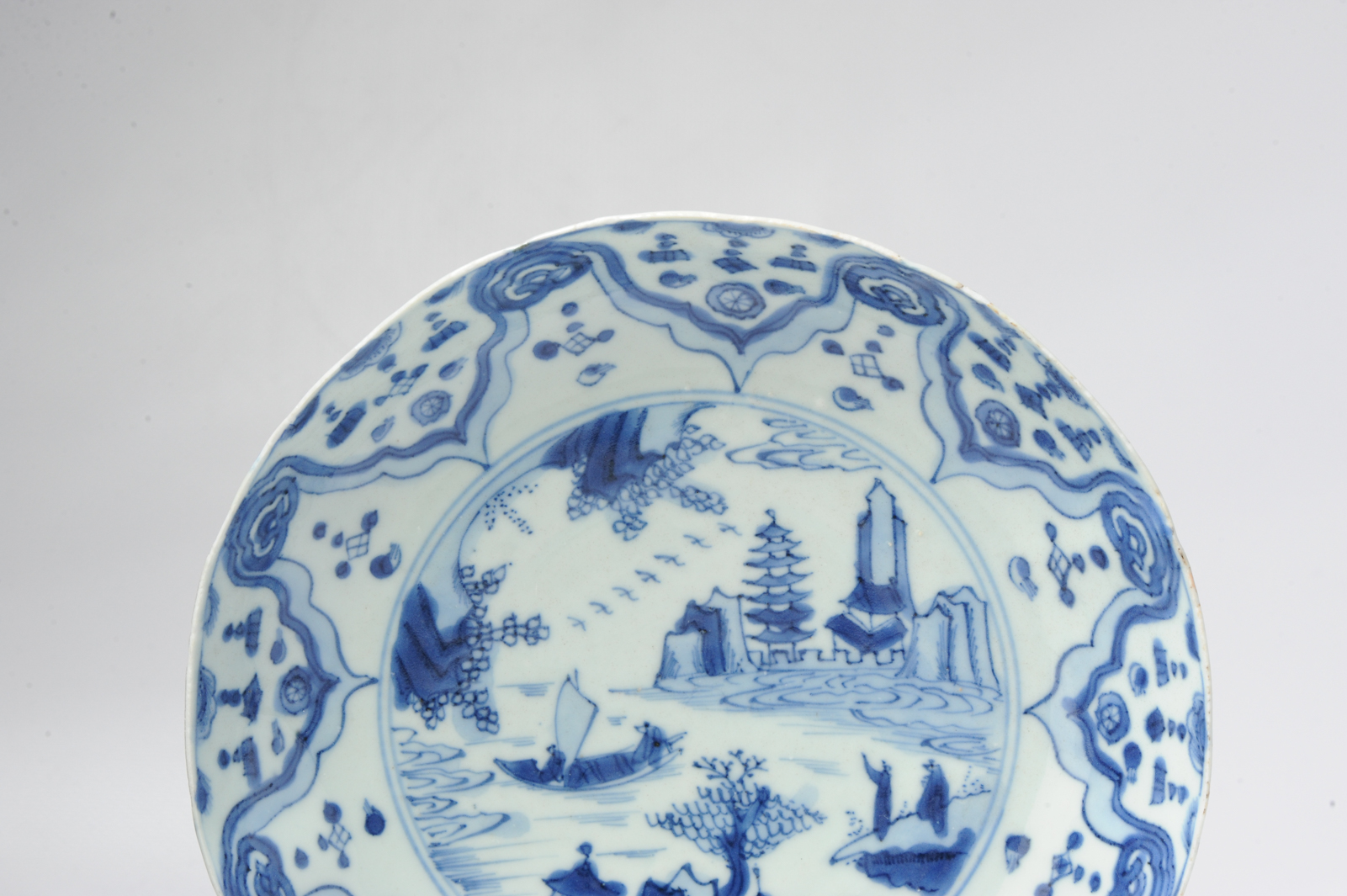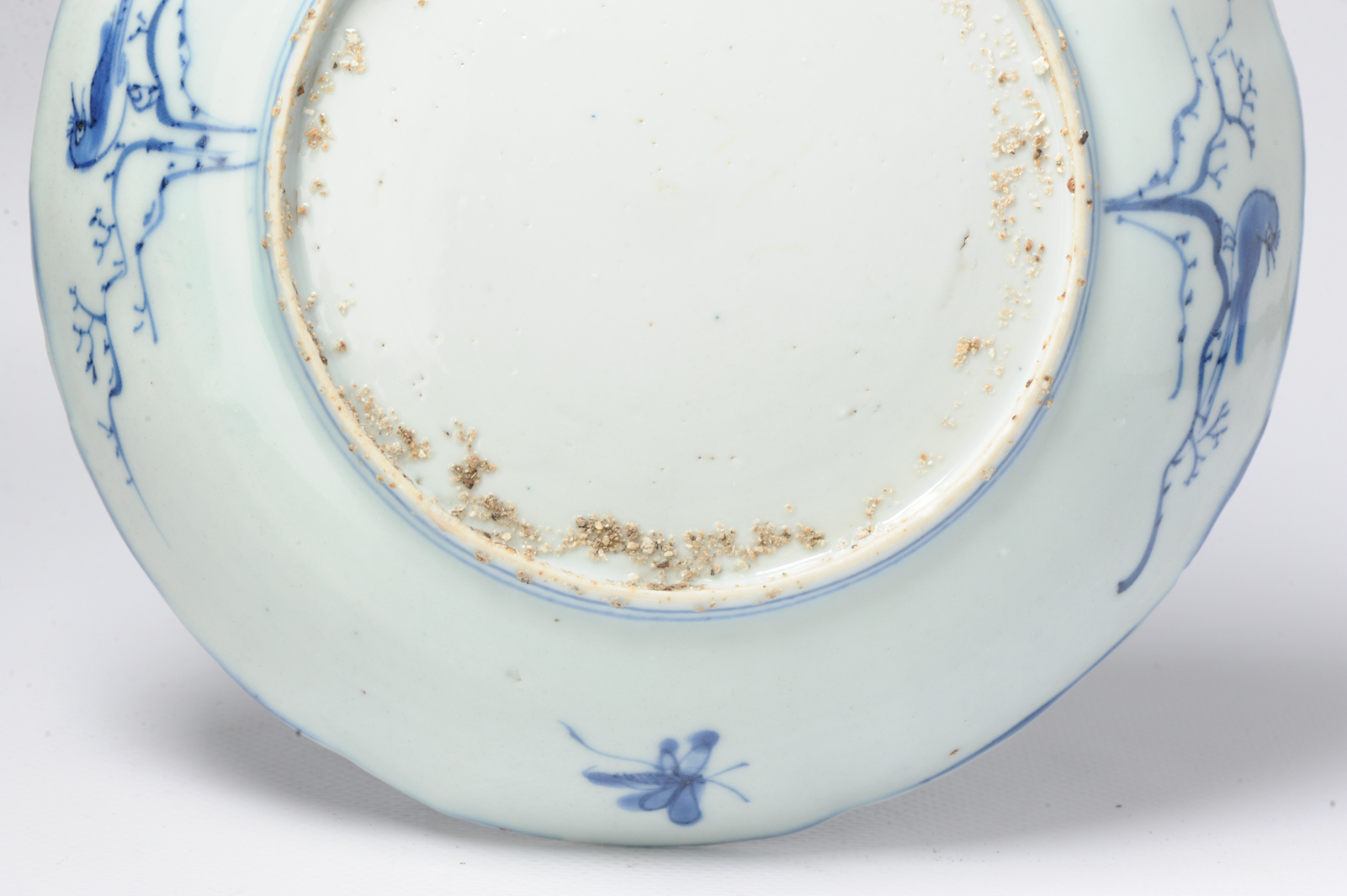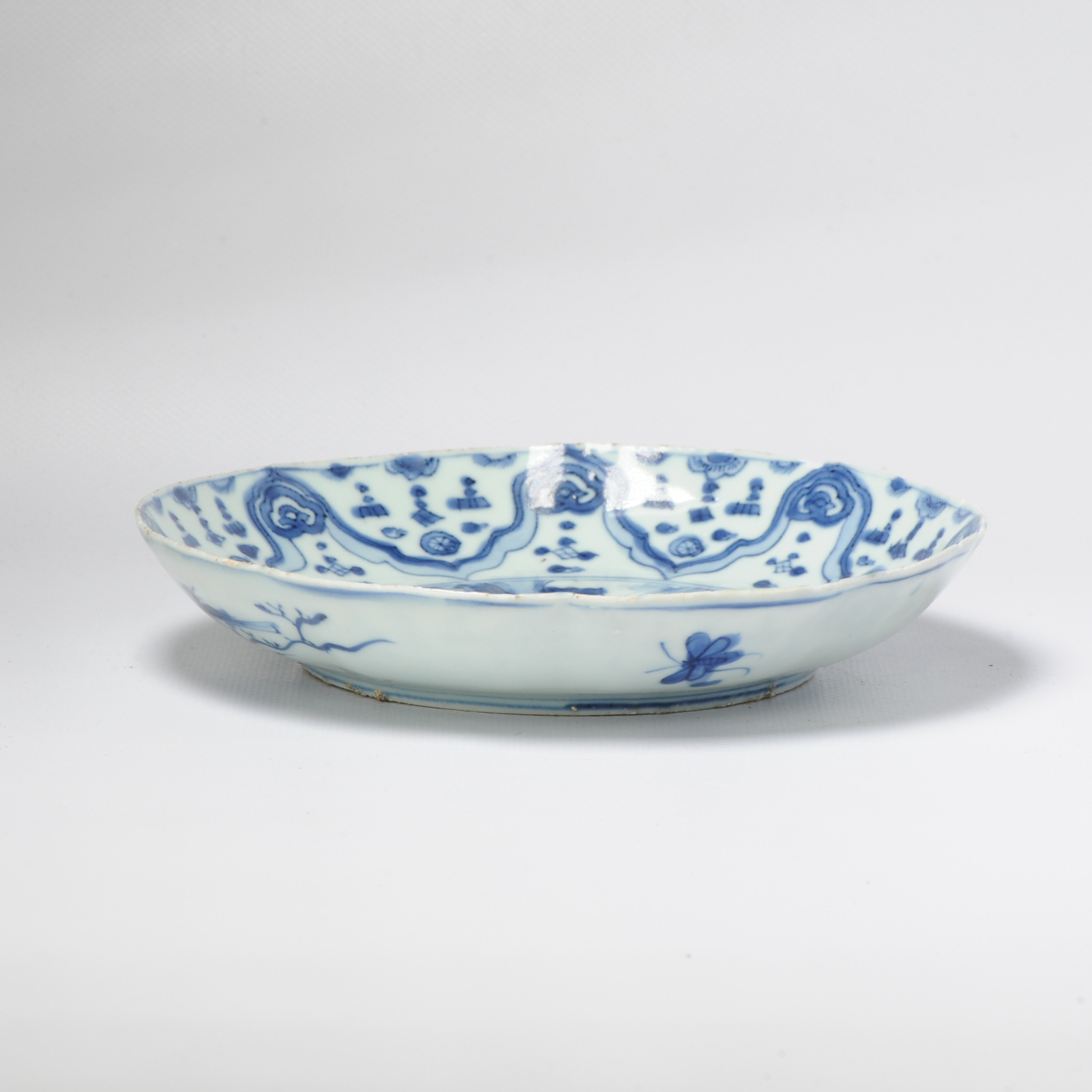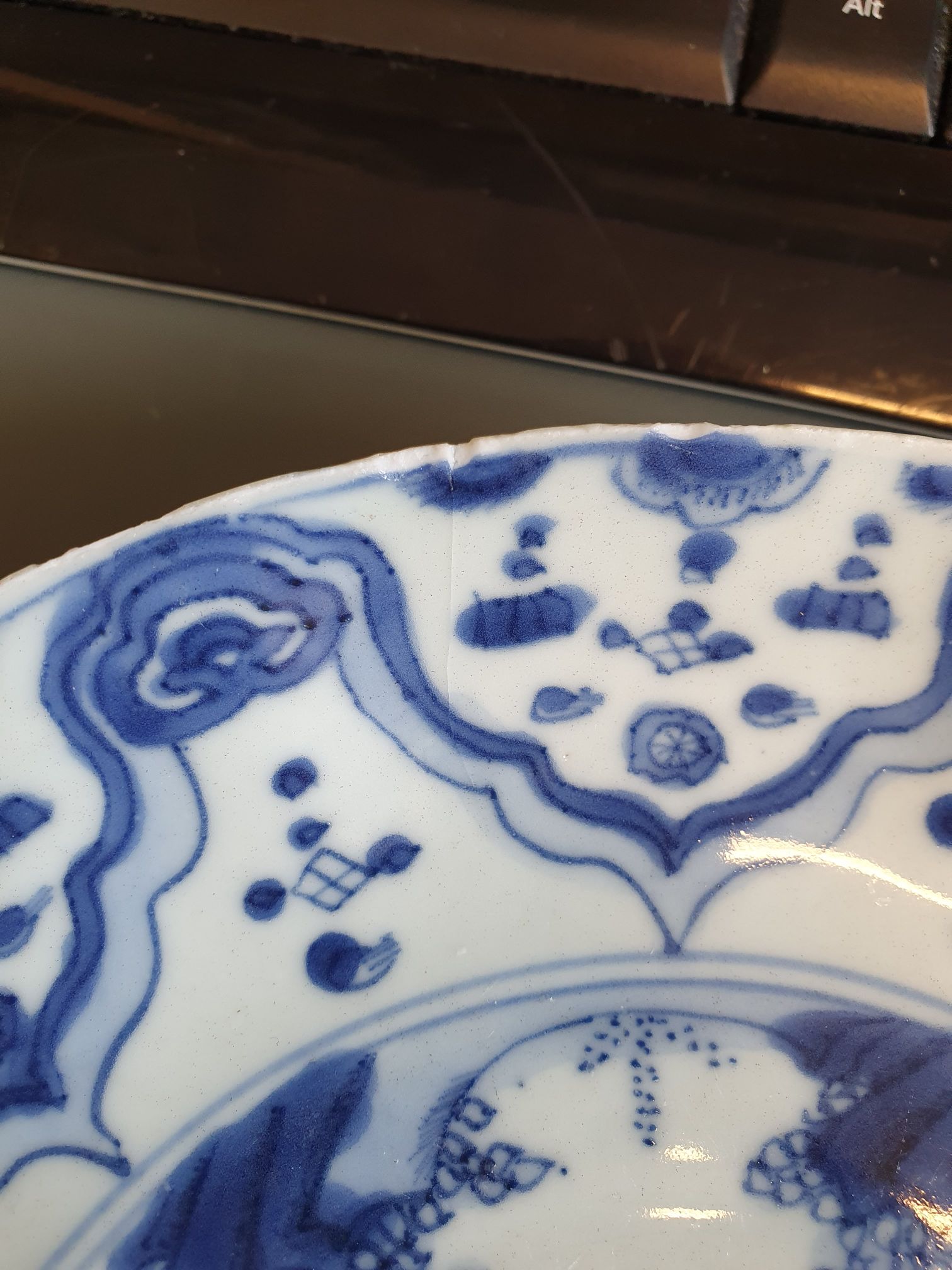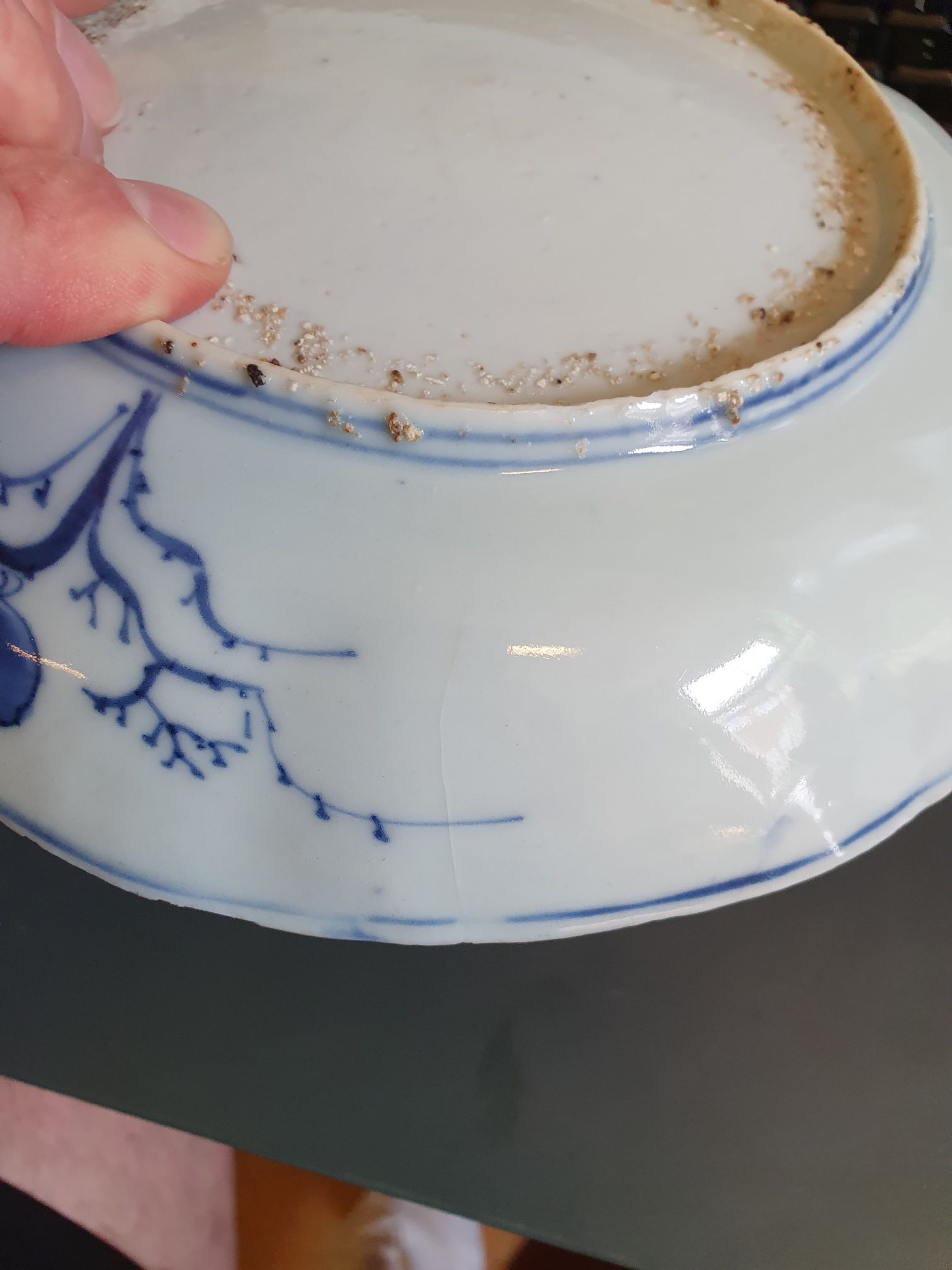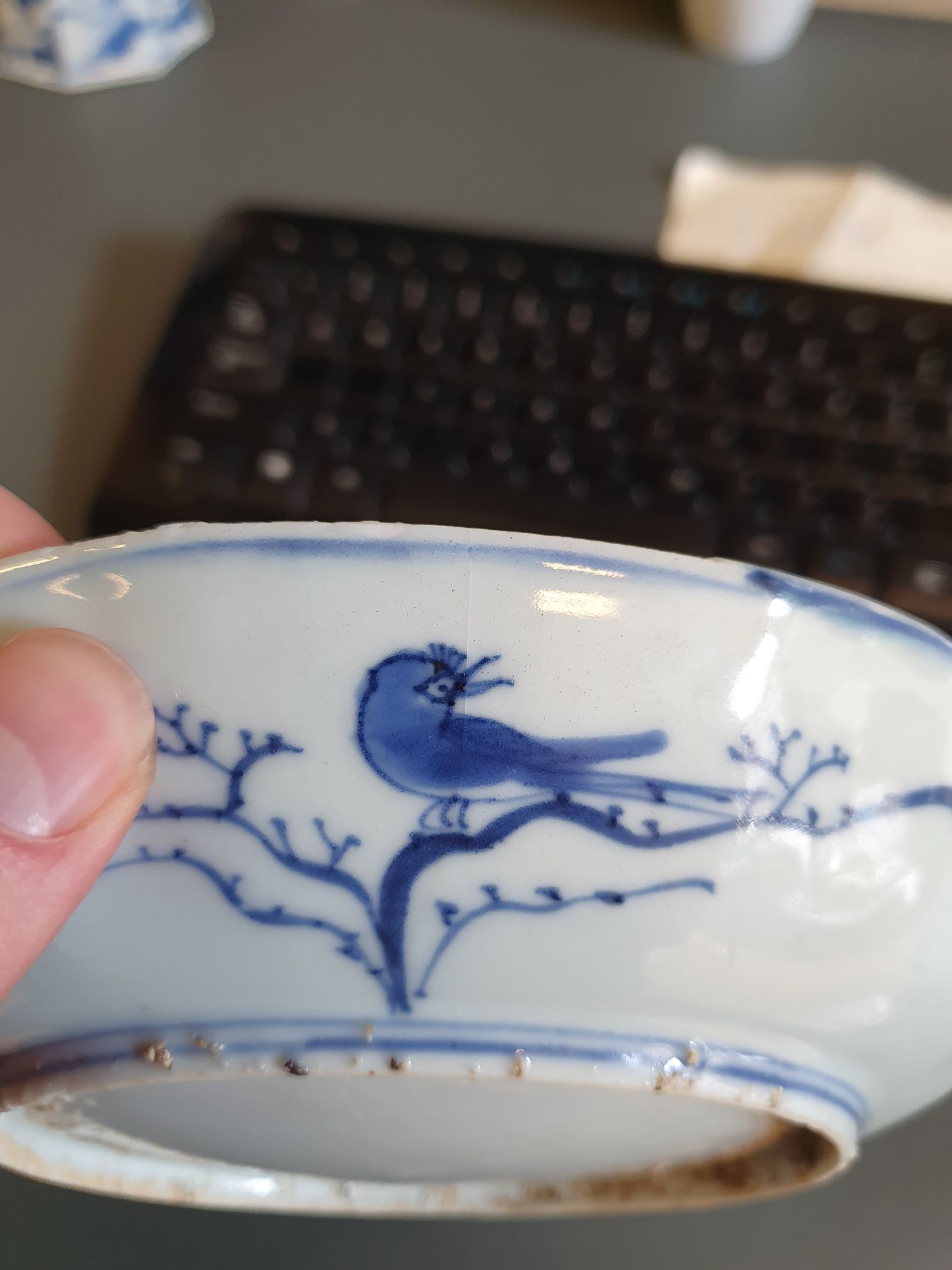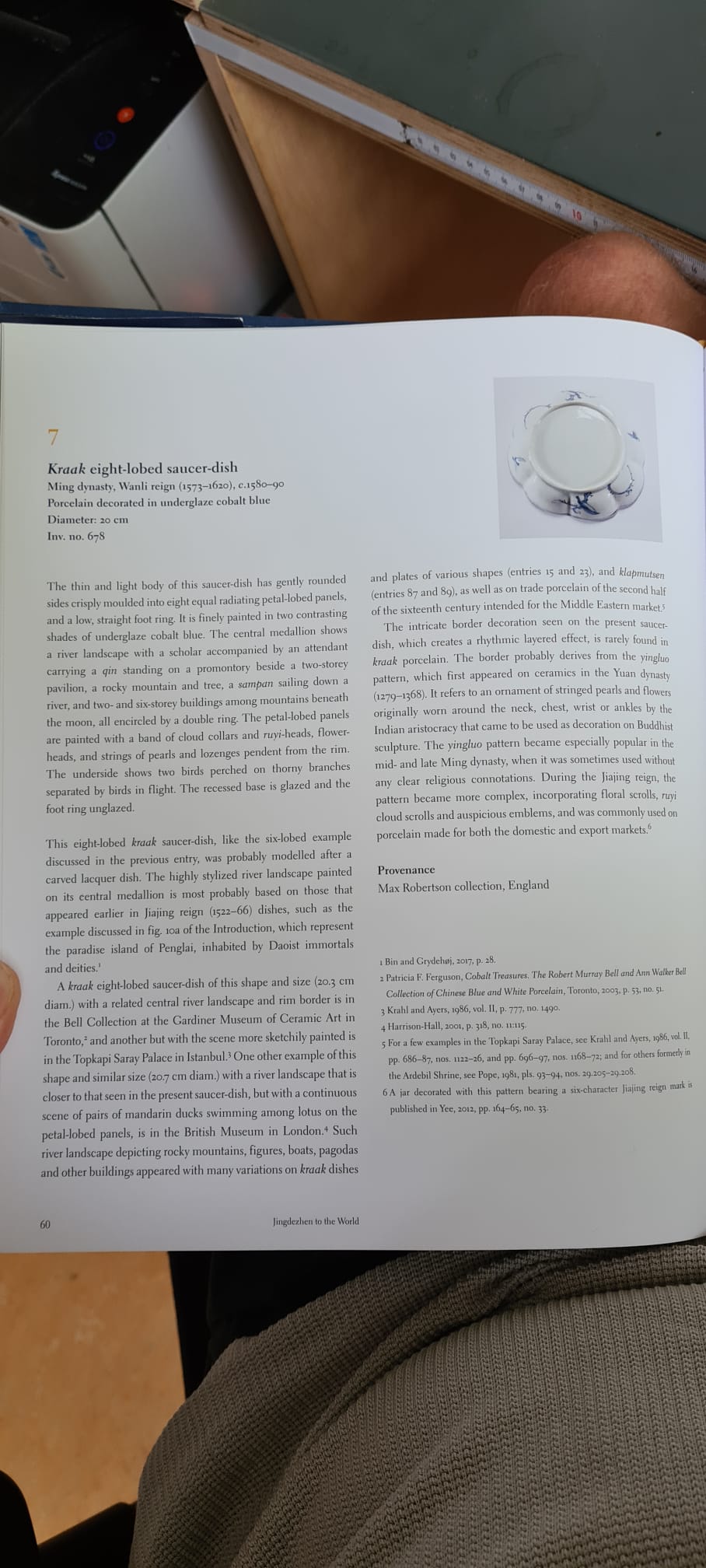Antique Chinese Porcelain Dish Wanli period Ca 1600 China Landscape
Out of stock
Condition Report: Overall Condition fritting to rim, 2 lines. Size: 194x28mm.
A very nicely decorated plate from ca 1600, wanli period.
The dish is beautifully designed with a central scene of a rocky water landscape with pagodes, fishermen boats. Symbols in the border.
Similar piece pictured in Jingdezhen to the World
Kraak eight-lobed saucer-dish
Ming dynasty, Wanli reign (1573-1620), c.1580-90
Porcelain decorated in underglaze cobalt blue
Diameter: 20 CM
Inv. no. 678
The thin and light body of this sacer-dish has gently founded
sides crisply moulded into cight equal radiating petal-lobed panels,
and a low, straight foot ring. It is finely painted in two contrasting
shades of underglaze cobalt blue. The central metallion shows
a river landscape with a scholar accompanied by an attendant
carrying a gin standing on a promontory beside a two-storey
pavilion, a rocky mountain and tree, a aumon sailing down a
river, and two-and six-storey buildings among mountains beneath
the moon, all encircled by a double ring. The petal-lobed panels
are painted with a band of cloud collars and ray-heads, flower-
heads, and strings of pearls and lozenges pendent from the rim.
The underside shows two birds perched on thorny branches
separated by birds in flight. The recessed base is glazed and the
foot ring unglazed
and plates of various shapes (entries 15 and 23), and Klapmutsen
(entries 87 and 89), as well as on trade porcelain of the second half
of the sixteenth century intended for the Middle Eastern markets
Thic intricate border decoration seen on the present saucer-
dish, which creates a rhythmic layered effect, is rarel found in
kraak porcelain. The border probably derives from the yingho
pattern, which first appeared on ceramics in the Yuan dynasty
(1279-1368). It refers to an omament of stringed pearls and flowers
originally worn around the neck, chest, wrist or ankles by the
Indian aristocracy that came to be used as decoration on Buddhist
sculpture. The yinglue pattern became especially popular in the
mid- and late Ming dynasty, when it was sometimes used without
any clear religious connotations. During the Jijing reign, the
pattern became more complex, incorporating floral scrolls, ruyi
cloud scrolls and auspicious emblems, and was commonly used on
porcelain made for both the domestic and export markets.
Preveriance
Max Robertson collection, England
This eight-lobed kraak saucer-ish, like the six-lobed example
discussed in the previous entry was probably modelled after a
carved lacquer dish. The highly stylized river landscape painted
on its central medallion is most probably based on those that
appeared earlier in Jijing reign (1522-66) dishes, such as the
example discussed in fig, son of the Introduction, which represent
the paradise island of Penglai, inhabited by Daoist immortals
and deities.
Akraak eight-lobed saucer-clish of this shape and size (20.3 cm
diam.) with a related central river landscape and rim border is in
the Bell Collection at the Gardiner Museum of Ceramic Art in
Toronto,’ and another but with the scene more sketchily painted is
in the Topkapi Saray Palace in Istanbul One other example of this
shape and similar size (20 7 cm diam.) with a river landscape that is
closer to that seen in the present saucer-dish, but with a continuous
scene of pairs of mandarin ducks swimming among lotus on the
petal-lobed panels, is in the British Museum in London. Such
river landscape depicting rocky mountains, figures, boats, pagodas
and other buildings appeared with many variations on traak dishes
Bin and Grydehei, 2017, p. 25
2 Patricia F. Ferguson, Coball Treature. The Robert Marnry Bland Ann Walker Bell
Collector of Chinese Blue and White Porcelain, Toronto, 2003. P. 53. no. 5.
Kruhland Myers, 1936, vol. II, p. 77, n. 1490
Harrison Hall 20.D. 316.1. 115.
Forf
5 Toricw examples in the Topkapi Saray Palace, soe Krahl and Avers, 86, vol. II,
pp. 586-87, no. 1.-36, and pp. 696-97, no. 1169-7; and for others formacily in
the Ardebil Shrine,sce Pope, 1981, pls. 93-94. DO 19.205-39.208
SA ja decorated with this pattern bearing a six-character Jijing reign mark is
published in Ycc, 2012, pp. 164-65, n. 33
60
Jingdezaen to the World
——————————————————————————————————————–
We start an auction every week on thursday, ending the next sunday;
https://www.ebay.com/str/antiquefromshangrila?LH_Auction=1
We combine shipment and have over 2200 fixed listings in store,
always good to take a look if you see other items you like to save some shipping:
https://www.ebay.com/usr/theceramics_and_collectibles
All will be packed neat and sent track and trace and insurance. Registered airmail.
Packages are always shipped on the next wednesday.
If there is a specific hurry please contact us.
——————————————————————————————————————
Additional Information
| Region of Origin | |
|---|---|
| Primary Material | |
| China Dynasty Period | Ming & Transitional (1368 – 1664), PRoC (1949 – now) |
| Century | 16th century, 17th century |
| Type | |
| Condition Report | Overall Condition fritting to rim, 2 lines. Size: 194x28mm. |
| Material | Porcelain & Pottery |




